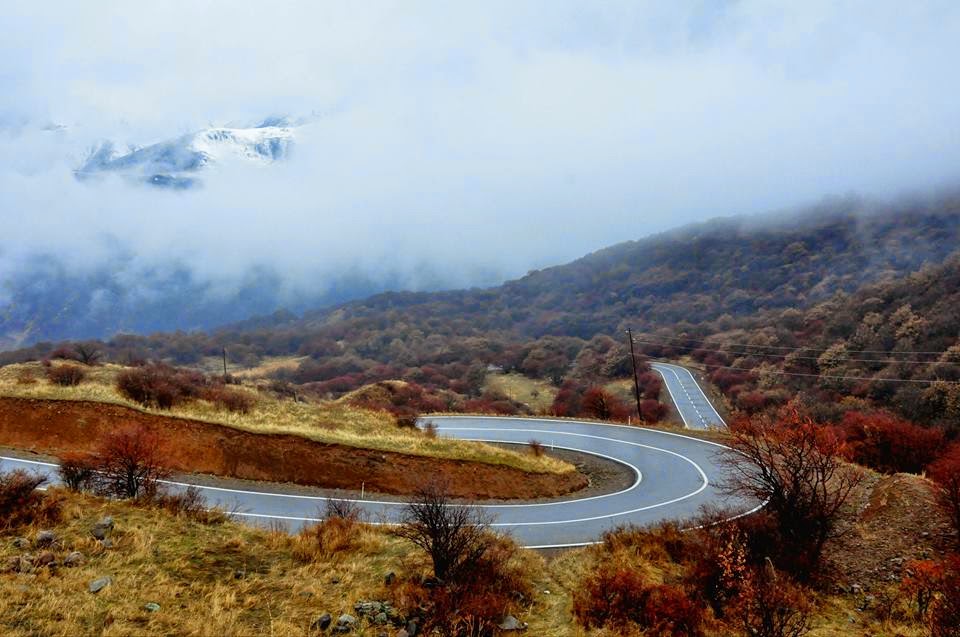Nakhchivan Autonomous Republic is situated in the South-East of the Transcaucasus plateau. The average height above sea level is 1450 m. The most part of the territory of Nakhchivan Autonomous Republic is surrounded by the Zangazur and Daralayaz mountain chains of the Lesser Caucasus.
The highest top is the Gapichig mountain (3904 m). 1/3 of the territory constitutes the plain lands along the Araz river (Sadarak, Sharur, Boyukduz, Kangarli, Nakhchivan, Julfa, Ordubad). There are more than 200 mineral water springs (Daridagh, Badamli, Sirab, Vaykhir and others). The annual precipitation in the plain lands along the Araz river is 200-300 mm but in the high mountainous places is 500-800 mm.
There are 400 big and small rivers in Nakhchivan Autonomous Republic the length of which is 1,8 thousand km. The type of the climate in Nakhchivan Autonomous Republic is mainly dry and continental. The flora of it is very rich. There are 2782 kinds of higher plants and a rather rich animal world.
The Flora and Fauna
The rare fauna and flora of Azerbaijan are in Nakhchivan Autonomous Republic. Though the territory of Nakhchivan Autonomous Republic comprises 6,2% of the territory of the Azerbaijan Republic for its kind variety its flora comprises around 60% and fauna 56% of the country.
7 climate zones out of 11 existing in the world are met in Nakhchivan Autonomous Republic. There are about 3000 plant species, 373 animal sorts, 226 bird kinds in Nakhchivan Autonomous Republic. Rare fauna and flora are protected in the Ordubad State Reservation, Ordubad National Park named after Hasan Aliyev, Shahbuz State Nature Reservation and along the Araz State Nature reservation.
The territory of Nakhchivan Autonomous Republic consists of rich flora and various plants. The flora of Nakhchivan Autonomous Republic is rich compared with other botanic-geographic regions of Azerbaijan. 2782 kinds of supreme plants are met in this region. They in their turns assembled in 773 species and 134 families. 68 of these kinds are cultivated. Wild plants possess 123 families and 697 species. 732 kinds flora are met in the lowlands along the Araz river, 1326 kinds in the middle mountainous and 640 kinds in the highest mountainous areas. The following plants and their types in Nakhchivan Autonomous Republic divide into –deserts and halfdeserts; friganoid and bozgir plants; high pasture, subalp and Alp meadows, Alp piles; woods, oasis, along river small woods; deposit and rock plants, water march plants.
The territory of autonomous republic is distinguished from the other regions of Azerbaijan according to its natural condition and richness of fauna. The kinds of animals and its number comprises 60-80% percent of the Azerbaijan fauna. The fauna of the autonomous republic has been investigated since the second half of the 19th century. The scientists have defined 813 butterfly kinds, 134 kinds of sovca, 4 kinds of insects, 3 kinds of runaways, 4 kinds of praying mantis, 67 kinds of straight wings. 75 kinds of grasshoppers, 480 kinds of halfhardwings.
29 kinds of fishes belonging to the bony fish class were discovered in the rivers and lakes of the autonomous republic.
There are 6 kinds of amphibians and 19 kinds of reptiles in Nakhchivan Autonomous Republic.
218 knids of birds out of 366 registered in Azerbaijan live in the territory of the autonomous republic. 61 kinds of mammals are known in the area. 40 kinds of vertebral animals out of 350 kinds living in the autonomous republic were included to the “Red book”.
Geological structure and minerals- Nakhchivan Autonomous Republic drew the attention of geologists and travelers in the middle of the 18th century. Discovering the caves, wells, primary labour tools in the fields of minerals (Duzdagh, Daridagh, Shakardara, Gomur, Guyulugagh, Gizilgaya and so on) once again shows that since ancient times salt, arsenic, copper, gold, sulphur etc. were excavated in the territory of Nakhchivan and also the scientific – descriptive tractats “Javahirnama” was created in the Middle Ages in Azerbaijan. The initial geological investigations and studying of mineral wealths in the region began in the 2nd half of the 18th century. The all-round and systematic investigations of the region began thereafter establishment of Nakhchivan Autonomous Republic.
The area of Nakhchivan Autonomous Republic is situated in the Nakhchivan tecthonic zone of the Lesser Caucasus from geological point of view. Its geological structure was comprised of the hollow par with 14 km of total thickness and with aboveground volcanic eruptions. Their aboveground appearance gives an opportunity to restore their 400 thousand years old geological data. The wide spread ware stones, construction stones and glassware in the hollow deposits play a great role in the local industry.
The mineral waters-60 % of the mineral waters reserve of Azerbaijan fall to the share of Nakhchivan Autonomous Republic. Over 250 mineral water sources were stated in 5,5 thousand km2 area of Nakhchivan Autonomous Republic. The mineral waters “Badamli”, “Sirab”, “Vaykhir”, “Gulustan” and “Narzan” are popular in the world.
|
Climate – The climate of Nakhchivan is sharp continental. A dry subtropic climate type is met in the territory of Ordubad. The absolute minimum temperature is 31 0C (Darvishlar), the absolute maximum temperature is 44 0C (Julfa).


























Hiç yorum yok:
Yorum Gönder